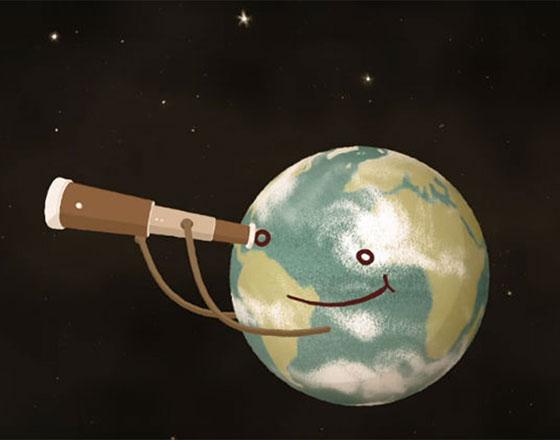You are here
Two ‘Earth-like’ planets don’t exist
By AFP - Jul 08,2014 - Last updated at Jul 08,2014
WASHINGTON — US scientists said Thursday two distant Earth-like planets, which some believed might be able to harbour life, do not actually exist and that astronomers were confused by a star’s sunspots.
The controversial pair of planets, Gliese d and g, some 22 light years away, were once believed to be in the Goldilocks zone — not too close and not too far from the star, where the potential exists for water and perhaps life.
They are part of a larger trove of potentially Earth-like planets that have been identified by astronomers so far, and NASA has said billions may be out there.
Too far to be seen with the naked eye or a telescope, they were spotted with a technique called Doppler radial velocity, orbiting a cool, red star called Gliese 581.
The method takes starlight from telescope and analyses its wavelengths. By detecting signs of a wobble from the gravitational tug of an orbiting planet, it can reveal the mass of a planet.
But astronomers at Pennsylvania State University now say Gliese 581 g and d were not planets at all, but a jumbled signal from the star itself.
“These two Goldilocks planets that people have been talking about, unfortunately, based on our research are not real,” said co-author Suvrath Mahadevan, assistant professor in the department of astronomy and astrophysics.
“What was previously thought to be a planetary signal was actually caused by stellar activity,” he told AFP.
In other words, magnetic fields or sunspots could have interfered with the signal that astronomers were reading.
The study in the journal Science said that “intense stellar magnetic activity, like sunspots on our own star... created false planet signals for d and g.”
Scientists have already ruled out the existence of a third planet, Gliese f. That leaves three planets known to be orbiting this particular star, none of which are in the habitable zone.
‘Pushing limits’
Astronomers have two ways of detecting faraway planets.
The NASA Kepler mission observes the dimming light of a star as a planet passes in front of it, known as a transit. This technique can tell astronomers about the approximate size of a planet, but not the mass.
The other approach, the one used in the study in Science, is known as Doppler radial velocity. It is more sensitive to stellar activities and can reveal the mass of a planet.
“Astronomers have made great progress being able to detect planets increasingly similar to the Earth — smaller in size, lower in mass, at similar distances from their stars — and we keep pushing that boundary,” said Eric Ford, an astronomy professor at Penn State who was not involved in the study.
“It is a lesson that, as you push the limits of what a technology can do, things that used to not really matter and things that you could neglect, begin to matter.”
Mahadevan said more study is needed to determine how many of the Earth-like planets discovered so far could be just a mixed signal.
“Most of the more massive exoplanets are not going to be affected by this. The issue is with the subtler signal,” he said.
Related Articles
PARIS — An international team of scientists said Monday they had discovered a trio of Earth-like planets that are the best bet so far for fi
WASHINGTON — An international team of scientists led by a prominent Harvard astronomer recently announced a new initiative to look for



















